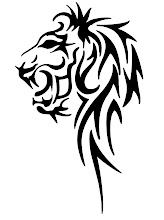Bass Guitar
Bass Guitar History
History & Use of the bass guitar - Sandra Stammberger
The bass guitar has been derived from the double bass, which was used in the late 1950's. Having 4 strings, these instruments add the lower tones to a musical performance. Experimentation with the bass had started as early as the 1920's. It wasn’t until the 50's however, that a proper bass instrument was formed.
In the mid 20th century jazz became popular. As double bass's were used those days, they were often not heard due to the lack of amplification. The drums, banjos and other instruments in the band drowned out the sound of the bass. Until the 1950 when the first electric bass came into existence with modern amplification techniques.
The bass guitar is played like all guitars with the player holding it close to his body in a horizontal position. The strings are plucked with hand or with the plectrum. In the 1970's, the slapping technique became popular.
Today, the bass guitar ranges from 4 strings up to 11 strings. The 5, 6 and 7 strings providing the mid range while the 11 string starts from a lower than human hearing going up to a very high active. Electric bass guitar players use various configurations. These changes are made by using preamplifiers and speaker sets. Signal processors are also varied to provide new soundscapes.
In night clubs, combo amplifiers are used. These amplifiers are fixed with single loud speakers to make them portable and effective.
The body of the instrument can be of wood or graphite. A wide range of finishing is applied to make it look good. IT can be colored or simply clear white. The work done on the body is fine engineering and delicate balances have to be maintained.
A hot debate rages on what to call this instrument. For non musicians, the term bass guitar is common, while hard core players like to call it electric bass or simple electric bass. Slowly but surely however, this instrument has gathered a large following which likes to use its own jargon.
The electric bass is a part of modern country music, post 1970 jazz and funk. Used mainly to provide backing, it adds a depth to the music. This instrument has added a whole new color to our musical pleasure. In sole music particularly, the bass guitar is effective.
Are sound effects used? Well, yes and no. As the bass guitar sets the tone for the rest of the band, sound effects are not often used, unlike electric guitars. Modern bands however have started experimenting with distortion units to add a new flavor to the bass and low key that they provide behind the music.
As we go into a new century, electric bass's become more and more popular. All bands use it today to add a subtle background. Many groups like U2 even use it to give a haunted feeling increasing emotional attachment with the music. Newer techniques have made this instrument a crucial part of any musical group today.About the Author: Sandra Stammberger is the editor of The Bass Guitar. Get detailed information on playing guitar along with comprehensive resources on the best guitar online shops and guitar supply.









